 |
 |
| Alfalfa (Medicago
sativa) Known as "King of Plants," Alfalfa and its roots have been used for centuries in many cultures. Native to the Mediterranean region, the plant also grows very well throughout North America and western Asia. Alfalfa is an excellent source of vitamins, minerals, fiber, proteins and fats. It is especially rich in the amino acid tryptophane, vitamins A, D and K, and iron. Alfalfa is considered to be a very nutritious herb. Ancient Chinese doctors used Alfalfa to increase appetite and to help poor digestion. Ayurvedic doctors believed it could help relieve certain types of ulcers and reduce the inflammation due to arthritis and rheumatism. High cholesterol is linked to heart disease and stroke. Through animal studies, researchers have learned that, when taken in certain dosages, Alfalfa leaves help decrease cholesterol levels. Although animal studies are not always representative of humans, there is evidence which indicates that consuming large quantities of Alfalfa may also help to decrease the level of cholesterol in some people. Although not proven, modern herbalists still suggest Alfalfa's use in relieving constipation and water retention. And, it is still commonly used today to help relieve the discomforts of various arthritic conditions. Angelica Root (Angelica archangelica) Throughout centuries of use, Angelica came to be regarded as a holy plant, and was widely known as "The Root of The Gods." There is an old belief among the Laplanders, who chewed the root regularly, that Angelica "strengthens life." The root and seed are rich in essential oils, calcium, vitamin E and vitamin B-12. For over a millennium, Angelica has been regarded as a powerful herb. Some people believed that it could guard them from wickedness. They made their children wear Angelica leaf necklaces to keep them safe from sickness and sorcery. Angelica roots were juiced and mixed with other herbs to produce what was known as "Carmelite Water." This mixture was thought to be a headache remedy and to assure long life. In 1665, Angelica water, nutmeg and treacle were mixed and given to people suffering from the bubonic plague. This concoction was named "The King's Excellent Plague Recipe" and was published by the College of Physicians in London. Later in the 17th century, Angelica was used to relieve colds and other respiratory disorders. it was also used to fight certain infections and increase vigor. Today, Angelica is used for a variety of ailments. It helps clear mucus and is used to treat people with colds, asthma and bronchitis. It is also useful in treating indigestion and relieving menstrual cramps. And, due to its anti-inflammatory effects, Angelica may act to decrease the discomforts often associated with arthritis and rheumatism. Cascara Sagrada (Rhamnus purshiana) (only in the U.S) Native North American Indians ground the bark of this tree into a fine powder and used it to brew a rich beverage. They held this bark in high esteem, pronouncing it sacred and passing the title "The Great Herb" down through generations. Cascara sagrada, known as sacred bark, is popularly used to treat chronic constipation. As a nutritional supplement, cascara sagrada supports and strengthens the colon, liver, gallbladder and digestive system. Cascara sagrada bark has been used for centuries by various cultures around the world. Cascara sagrada is a good source of vitamin A, vitamin B2, vitamin B5, calcium, manganese and potassium. The natural properties found in cascara sagrada stimulate the secretion of digestive fluids,increase the flow of bile and cleanse the intestines. Cascara sagrada is beneficial for treating a sluggish gallbladder, digestive problems, enlarged liver, intestinal parasites, jaundice and colitis. In addition, cascara sagrada may be used to treat hemorrhoids, and a variety of skin problems. Celery Seed (Apium graveolens) Native to the British Isles, Celery Seed has had varied uses around the world for hundreds of years. It contains vitamins A, B, C, and iron. During ancient times, Ayurvedic physicians used Celery Seed to treat people with the following conditions: colds, flu, water retention, poor digestion, various types of arthritis, and certain ailments of the liver and spleen. Celery Seed is a diuretic. Diuretic substances are used by physicians for treating high blood pressure and congestive heart failure. After finding that celery injections decreased blood pressure in animals, Chinese researchers fed the herb to a small sample of people with elevated blood pressure. The findings concluded that most of the sample demonstrated convincing decreases in their blood pressure level. In addition, research has found that Celery Seed helps to decrease blood sugar levels and may therefore, be useful in helping to control diabetes. Today Celery Seed is still used by herbalists, and is said to provide many benefits. Modern herbalists believe that Celery Seed helps digestion and increases appetite. It may also be used to alleviate the discomforts of rheumatism. Interestingly, it is widely believed to be one of the better aphrodisiacs. German Chamomile (Matricaria chamomilla) To the ancient Egyptians and Romans, Chamomile was a sacred flower. The Egyptians revered it so much they consecrated it to their gods and dedicated it to the sun - the highest of all honors in their culture. Its delicate apple-like scent and flavor yielded a favorite tea brewed from a light blue oil. The soothing qualities of the tea were thought to bring about "youthful mental alertness." This herb has also been said to rejuvenate the skin and hair. Chamomile is high in calcium, magnesium, iron and other trace minerals. During ancient times, the Egyptians used Chamomile as a cure for the fever that accompanied malaria. Herbalists Dioscorides and Pliny used Chamomile to treat headaches and certain liver, kidney and bladder ailments. Germans have used Chamomile since its discovery as a means of curing indigestion and for relief from menstrual cramps. They say it is "Alles zutraut" which means "capable of anything." Chamomile is one of the most popular herbs that exists today. To this day, it is still well-known in its use for poor digestion, menstrual cramps and stress related conditions. Certain studies have indicated that Chamomile could be used as a gentle calmant and is useful in combating sleeplessness. Research also supports Chamomile's use as a treatment for upset stomachs. In addition, it has been found to have properties that may help it prevent certain types of ulcers and increase their recovery time. Dandelion Root (Taraxacum officinale) Most people know Dandelion to be that nasty weed that you pluck from your lawn. What many people don't realize is that it has many useful properties and for over 1000 years it has been used as an effective herbal medicine. Dandelion is rich in vitamin complexes and contains choline, one of the B-complex vitamins and a main component of lecithin. The leaves are high in potassium and the roots include vitamins A and C, and essential linolenic acid. Dandelion has been popular for centuries in China, Europe and Native American cultures. Residents of the Spanish island, Minorca, subsisted on nothing but Dandelion when the rest of their harvest was destroyed. Since ancient times, Chinese doctors and India's Ayurvedic physicians have used Dandelion as a treatment for a variety of conditions including; colds, bronchitis, obesity, hepatitis and certain types of ulcers. Modern herbalists suggest Dandelion's use for many conditions. Due to its diuretic properties and its ability to eliminate excess water and salt, Dandelion is used for losing weight and for relief from premenstrual syndrome (PMS). In addition, it is used to help treat certain illnesses of the liver and kidney, ease digestion and may help treat high blood pressure. Gentian Root (Gentiana lutea) Found in the mountains of Europe, Gentian root was popular for centuries as a midday tea. Gentian berries were dried and ground to make a popular beverage by early Pennsylvanian Germans. It is rich in the B-complex nutrients, vitamin F, niacin, inositol, and many trace elements. Gentian is classified as a bitter. Bitters are known to increase appetite and help the digestion process. This herb is known to have a harsh taste and is therefore usually mixed with other ingredients. Gentian has been used in various medicines since 1200 BC. Historically, the Greeks, Egyptians and Romans used it to increase appetite, cleanse sores, and treat certain types of liver disease and stomach disorders. It has also been used by Chinese doctors as a treatment for arthritis, sore throats and headaches. Today, due to gentianine (a chemical found in the herb), Gentian may be used as a digestive aid. In addition, it has been found to have anti-inflammatory qualities which indicate that it may be useful in relieving certain inflammatory conditions, such as arthritis and rheumatism. Horehound Root (Marrubium vulgare) Common to England, this mint-herb is one of five plants the Jews took for the Feast of the Passover. It is native to Europe, but also grows well throughout North America. Horehound has been widely cultivated on a commercial basis for centuries. During ancient times people believed that Horehound could help relieve a variety of ailments including; chronic hepatitis, tuberculosis, tumors, typhoid, paratyphoid, worms, itches, jaundice and bronchitis. In addition, since the 1600's, horehound has been used to help relieve sore throats, bad coughs and colds. Still today, modern herbalists suggest Horehound's use in conjunction with other herbs for treating fevers, coughs, colds and bronchitis. It is considered to be one of the best herbs for clearing the bronchial passages. Horehound is also known to cool down the body which helps break fevers. In addition, it may alleviate the lethargic sensation that usually accompanies the common cold. Licorice Root (Glycyrrhiza glabra) Used for generations in China, ancient Greece and the British Isles, Licorice is cultivated around the world. The sweet taste of its yellow root prompted its use in the manufacture of candies. It contains vitamin E, B-complex, biotin, niacin, pantothenic acid, lecithin, manganese and other trace elements. Although Licorice has been used to flavor candies for hundreds of years, many people don't know that it also has very beneficial medicinal qualities. Licorice root has gained a reputation for strengthening the body during times of stress. Since the 14th century, Licorice has been used to soothe coughs, colds and bronchitis. It is still used for these reasons today and it is one of the ingredients found in many European cough preparations. Research has shown that Licorice helps treat and relieve the pains that accompany certain types of ulcers. Although common practice in Europe, its use in treating ulcers is not as prevalent in North America. However, with more and more researchers gaining positive results with its use as an ulcer treatment, Licorice may soon become more popular in North America. Finally, Licorice also has anti-inflammatory properties and may therefore help relieve the discomforts that accompany certain arthritic conditions. Saw Palmetto Berry (Serenoa repens) Found in abundance in swampy areas along the Atlantic coast of North America, the Saw Palmetto berry was consumed by Native Americans and early American settlers. Widespread use of this plant is recorded from the 1870's until 1950. The medicinal properties of the Saw Palmetto herb are derived from its berries. Native Indians believed that a tea made from the berry "soothed and quieted the mind." Saw Palmetto contains many primary nutrients and elemental minerals. The seeds of this herb were eaten by North Americans and were regarded as strength and weight enhancers. Saw Palmetto has been considered an aphrodisiac and has been used in the past for coughs and colds. It is said to help maintain vigor as we grow older. Saw Palmetto may help the problem of male impotence. Recent studies have found that it can help counter benign prostate enlargement, a disorder common to 50-60% of men between the ages of 40-59. Some studies have proven its superior efficiency for countering prostate enlargement over various pharmaceutical medicines. Saw Palmetto acts fast, is efficient and completely natural. Passion Flower (Passiflora incarnata) Native Americans record the use of Passion Flower as early as 1610. Early Spanish explorers found it in wide use throughout the native culture, and took samples back to Spain when they returned. From there it spread throughout Europe and eventually the world. Passion Flower is plentiful in the nutrient complexes, especially calcium and magnesium. Despite its amorous name, Passion Flower has no aphrodisiacal effects. It is, on the contrary, a popular sedative. Early American settler, Captain John Smith, said that Passion Flower was cultivated by the Indians of Virginia who believed it to "quiet and soothe" the body and assure peaceful rest. During the 19th century, the Eclectics used it as a treatment for many conditions including menstrual cramps and sleeplessness. Today, Passion Flower is used as a muscle relaxant and sedative. It has been known to help calm anxiety, relieve its symptoms (i.e. headaches, muscle spasms etc.) and help you sleep better. It also has anti-inflammatory properties and may therefore help relieve the discomforts associated with certain arthritic conditions. Sarsaparilla (Smilax aristolochiaefolia) Sarsaparilia did not become well-known until the 16th century. During these times Caribbean and North American Indians suggested its use as a treatment for various skin ailments, urinary problems and to help maintain ones' youth and energy. Although controversial, Sarsaparilla was also used as a treatment for syphilis. Sarsaparilla contains vitamin C, B-compex (especially B-6), calcium, iron and other trace minerals. There has not been a lot of in-depth research done on Sarsaparilla so it is hard to recognize all of its possible benefits. However, many people from different countries have suggested similar uses. The Europeans and Chinese believe that it can be used to reduce the discomforts of various arthritic, as well as certain urinary conditions. Modern herbalists believe that Sarsaparilla should be used for the treatment of colds, coughs, fevers and gout. And, although no research supports its use as a muscle strengthening herb, many weight trainers continue to use Sarsaparilla to enhance muscle growth. Senega Root (Polygala senega) Found in the wild throughout North America, this root has been highly valued for centuries for its refreshing mint flavor and many nutritional benefits. It is found wild in the United States and throughout North America. The Native American Senega tribe, the plant's namesake, used the creamy white oil extracted from the plant as a spice and flavoring. It is rich in magnesium and other trace minerals. Polygala Senega is one of 500 species from the Senega family. It is a perennial herb, 20-30 cm high, with small white flowers and lanceolate leaves. The medicinal benefits of the Polygala Senega herb are found in its roots. Although it is used to treat many ailments, Senega, when taken in large amounts may cause diarrhea and stomach upset. Throughout the years Senega has been known to be an excellent expectorant. Expectorants help to remove phlegm from bronchial passages. As such, Polygala Senega has been and is still being used to treat bronchitis and pneumonia. In addition, Senega has been used to relieve the symptoms of asthma. Thyme (Thymus vulgaris) This plant has flourished in the Mediterranean region and in Europe for at least two millennia. It was a symbol of graceful elegance, strength, activity and bravery during. the European age of chivalry. It was used as a culinary spice, tea and oil and still is today. Abundant in the nutrient thiamine, Thyme also includes B-complex, vitamins C and D and trace minerals. Ancient Romans used Thyme to treat coughs, digestive problems and intestinal worms. Thyme oil started to be used as an antiseptic during the 17th century and became common practice by the mid 1900's. Today Thyme is used in mouthwashes and decongestants. Although Thyme is still used extensively by modern herbalists as an external antiseptic, thyme oil may irritate the skin and cause allergic reactions. Modern herbalists are also known to use Thyme to help relieve sore muscles, counter tiredness and to help ease depression. It is also taken internally to help poor digestion and to soothe sore throats, coughs and other respiratory inflammations. |
 |
 |
 |
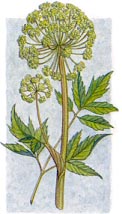 |
 |
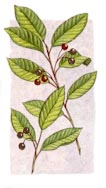 |
 |
 |
 |
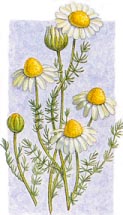 |
 |
 |
 |
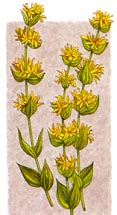 |
 |
 |
 |
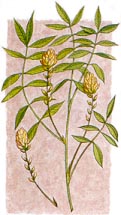 |
 |
 |
 |
 |
 |
 |
 |
 |
 |
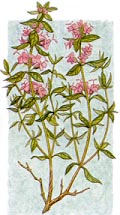 |
 |
